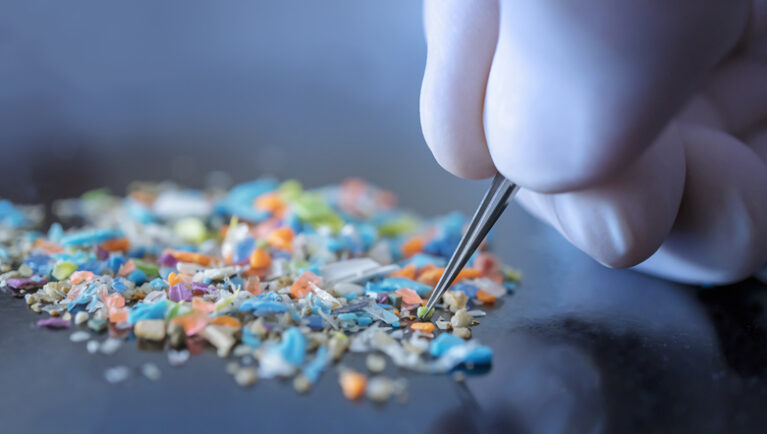
ISF and seed leaders weigh in on the hot-button topic.
This article was written in collaboration with Seed World Europe Editor Marcel Bruins.
Editor’s note: Seed World U.S. wishes you a Merry Christmas and a Happy New Year. We hope you’re taking a break from the bustle of life and enjoying your family. If you need some reading material with your coffee in the mornings, we’ve got you! We are revisiting some of your favorite stories of 2024. Enjoy!
This article examines the seed sector’s ongoing efforts to address the issue of microplastics in seed treatments, a growing environmental concern. While seed treatments are vital for crop protection and yield optimization, the polymers used to apply them can contribute to microplastic pollution. With new legislation in Europe restricting the use of intentionally added microplastics in seed treatments, the industry is actively transitioning to more sustainable alternatives. Industry leaders emphasize their commitment to eliminating microplastics while maintaining the benefits of seed treatments for safe and sustainable agriculture. This collaborative effort showcases the seed sector’s dedication to environmental responsibility and innovation, ensuring a cleaner future for both agriculture and the planet.
In an era where environmental consciousness rules, the seed sector is at a crucial juncture, grappling with the pervasive issue of microplastics in seed treatments. A recent statement by the International Seed Federation (ISF) reignited discussions on the topic.
Incotec’s global marketing manager and global regulatory manager Rob Pronk, sheds light on the significance of seed treatments.
“To grow crops sustainably and safely, the use of seed treatments is beneficial in many ways,” Pronk says.
The goal of seed treatment products (STPs) is to protect seeds against pests and diseases present on the seeds and in the environment during sowing or to enable the seeds to express their genetic potential across various agronomical conditions when sowing. STPs can be a chemical, biological, biostimulating, phytosanitary or fertilizing product that has a positive effect when the seed is sown in the natural environment.
Pronk highlights the precision of seed treatments which ensures accurate planting and protects the intrinsic value of the seed itself. These methods not only minimize exposure to STPs for workers and the environment but also drastically reduce the need for active ingredients.
“All these benefits contribute to important UN Sustainable Development Goals (SDG),” he adds.
Several UN SDG goals are positively impacted through seed treatment. In the context of this document, the most prominent is UN SDG 12 – Responsible Consumption and Production.
Microplastics in Seed Treatment
Beneath the surface of these advancements lies a challenge — microplastics. Microplastics are small plastic fragments less than 5 mm in diameter. Once released into the environment, they are notoriously slow to degrade, posing significant environmental and health risks. While the primary contributors to environmental microplastics include road tire wear and washing of synthetic clothes, agriculture also plays a role through the microplastics in polymers used for seed treatments.
Though currently estimated at only 1% of the total microplastics released, the seed sector is ambitiously aiming for zero contributions.
“The most prominent function of polymers in seed treatments is to ensure proper adherence of STPs to the seed surface,” explains Robert Gaffney, BASF director for Global Marketing and Seed Treatments – Global Key Accounts.
These polymers help reduce the risk of dust and STPs reaching non-target organisms, increasing safety for both factory workers and farmers.
Legislation and Transition
Europe introduced legislation in October 2023, that restricts the use of intentionally added microplastics in seed treatments, with a transition period ranging from five to eight years depending on the regulatory state of the applied product. Other regions are contemplating similar measures. Bert Compaan, Research Manager Seed Pathology at Bejo Zaden, emphasizes the need for a transition period.
“This time allows the industry to develop and validate alternative seed treatments and associated equipment,” he states.
Seed Community Support for Sustainable Alternatives
ISF phytosanitary affairs manager Rose Souza Richards articulates the industry’s commitment.
“There is broad support from the international seed community to offer microplastic-free products where feasible,” she says.
Already, seed-applied polymers free of microplastics are becoming more available as companies transition their portfolios. The challenge remains more complex for STPs, requiring extensive reformulation and regulatory approvals.
“The advantages of seed treatment are clear in promoting sustainable and safe crop growth,” Souza Richards says. “While acknowledging the concerns surrounding microplastics, the industry is actively addressing these issues through ongoing research for innovative, environmentally friendly alternatives. The commitment from the international seed community to provide microplastic-free products reflects our collective dedication to responsible practices. As we navigate this transition, it is crucial for all stakeholders to collaborate, ensuring the availability of sustainable alternatives for growers. Together, we can uphold our commitment to environmental sustainability and reinforce our role as conscientious leaders in the agricultural industry.”
As the seed sector continues its journey toward sustainability, the path is fraught with challenges but also lined with opportunities for innovation and responsible growth. The commitment to eliminating microplastics is not just about compliance but about setting a precedent for future generations.
For more information, read the Stewardship Guidelines on Seed Treatment and handling of treated seed at https://croplife.org/wp-content/uploads/2019/01/Stewardship-Guidelines-on-Seed-Treatment-and-Handling-of-Treated-Seed_Final-1.pdf.
More information about specific legislation: Sept. 25, 2023 Commission Regulation (EU) 2023/2055 amending Annex XVII to Regulation (EC) No 1907/2006 of the European Parliament and of the Council concerning the Registration, Evaluation, Authorization and Restriction of Chemicals (REACH) as regards synthetic polymer microparticles are available at https://single-market-economy.ec.europa.eu/publications/commission-regulation-eu-amending-reach-regulation-regards-synthetic-polymer-microparticles_en#details. A eight-year transition period is available for plant protection products, while other products for agricultural use, like polymers, will be allowed a five-year transition period.
The post The Seed Sector’s Battle Against Microplastics appeared first on Seed World.



